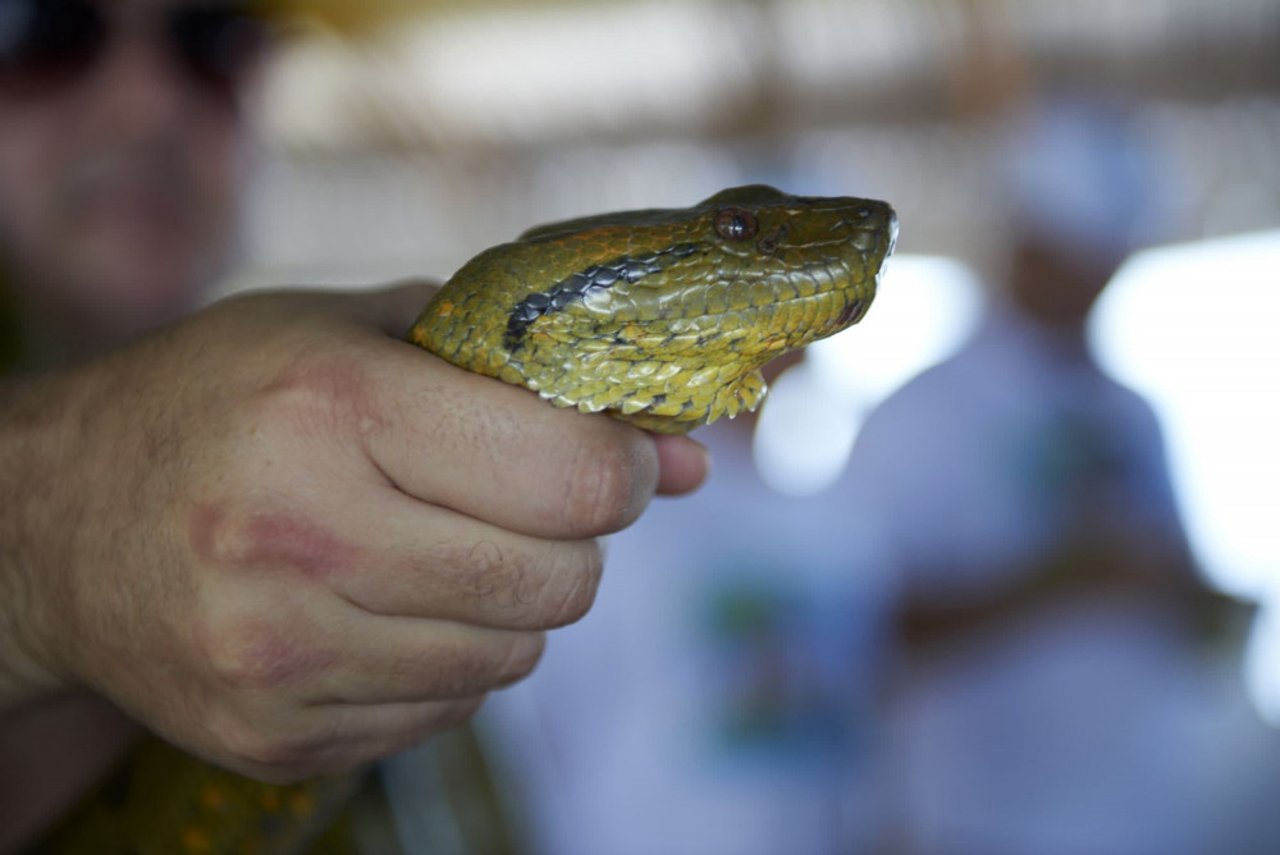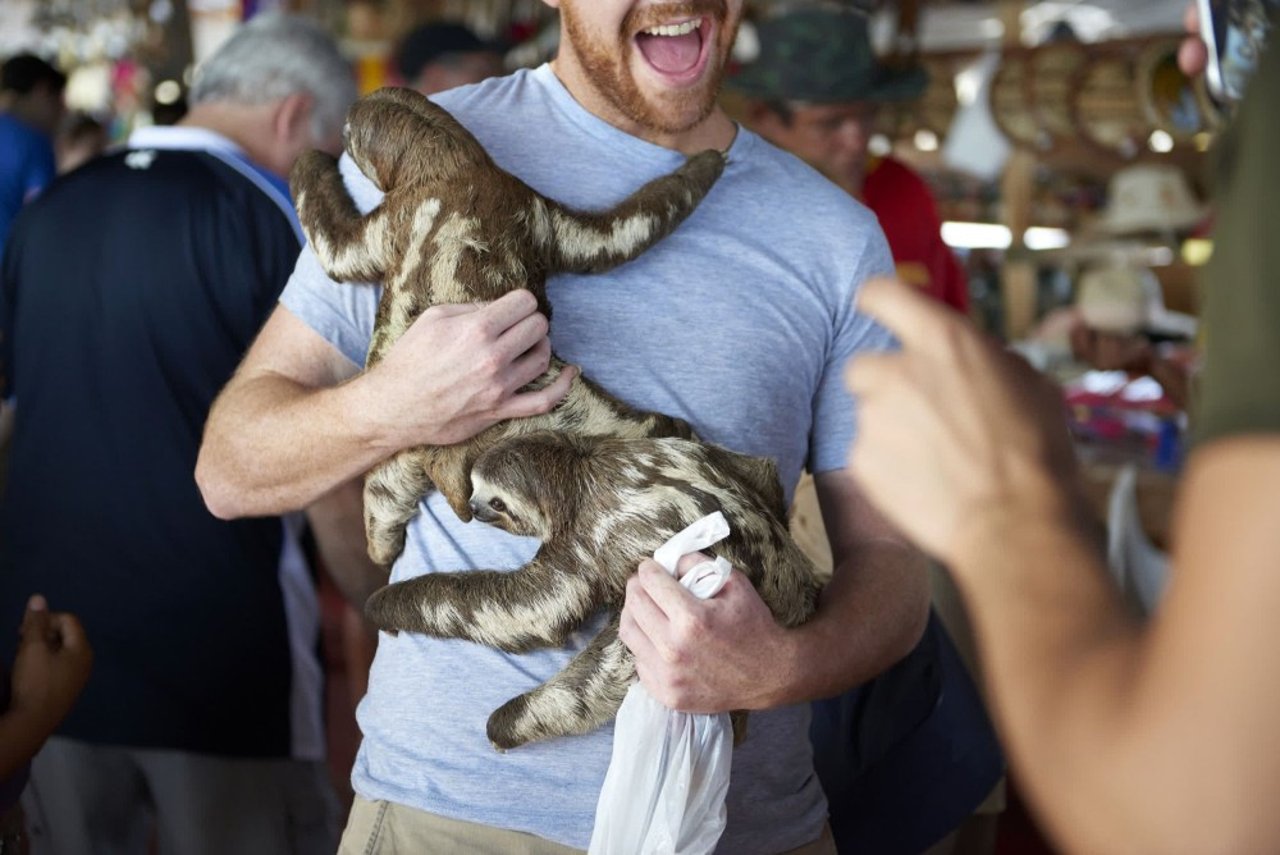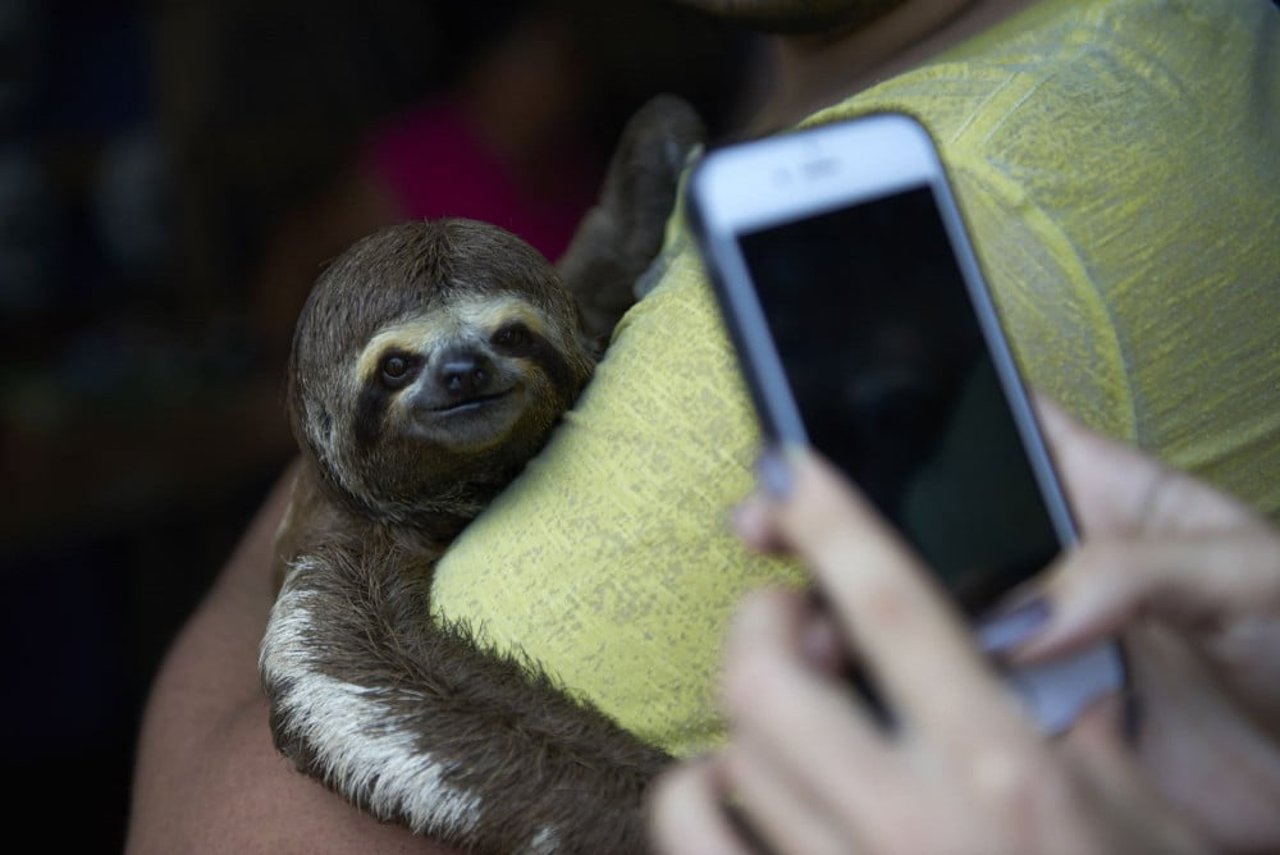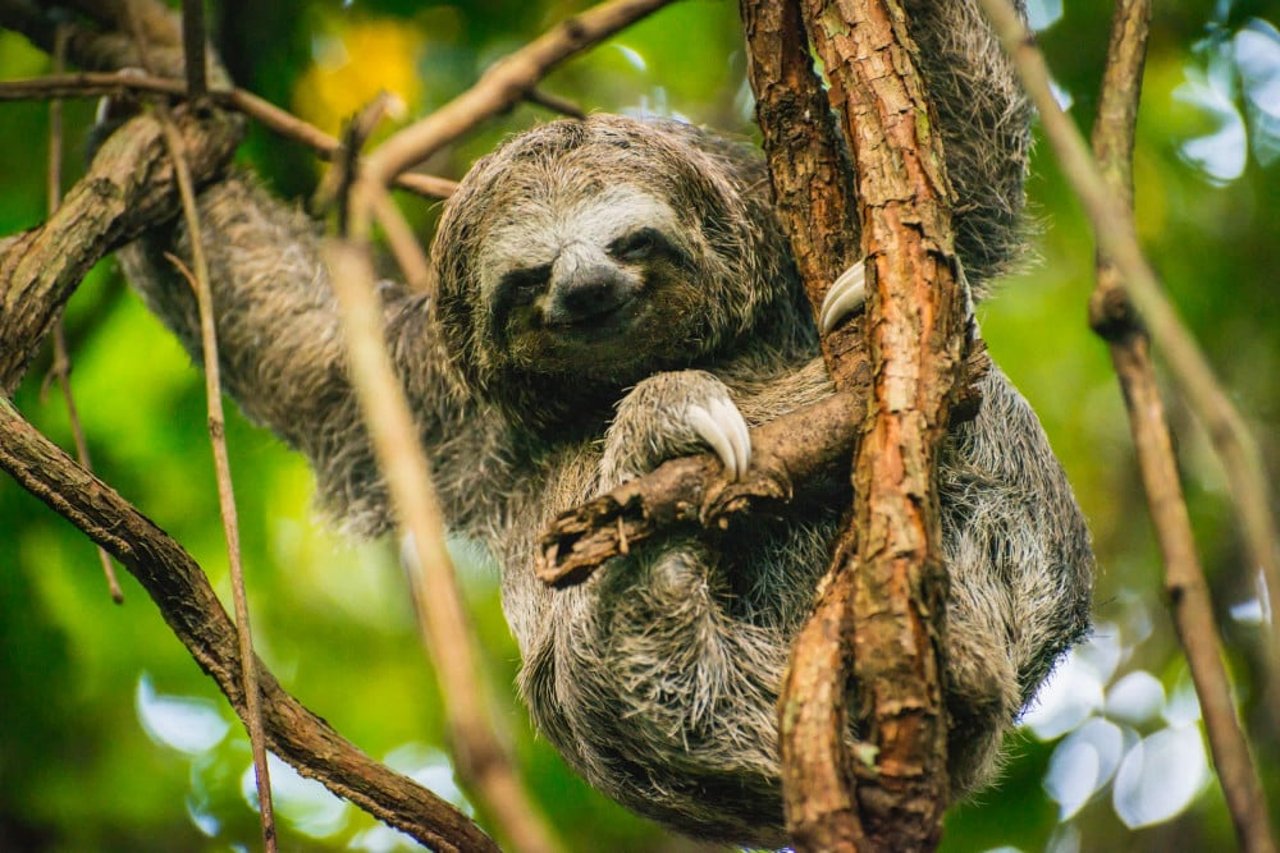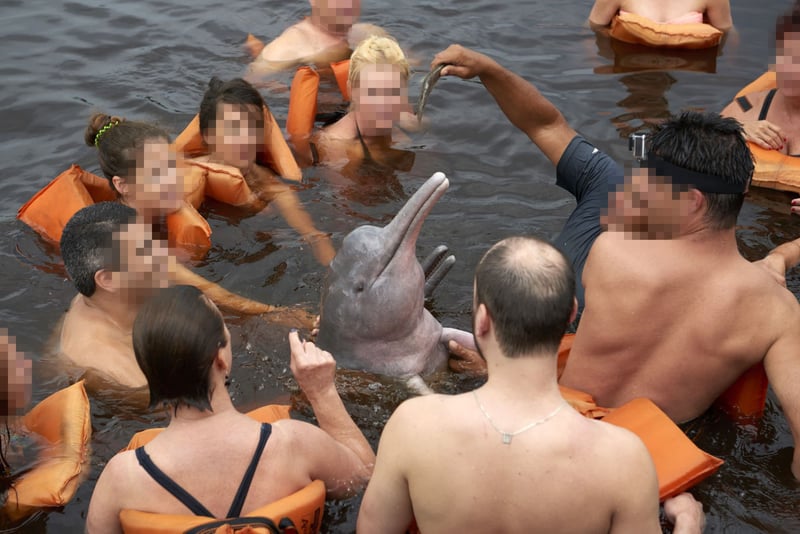
Booming tourist demand for snaps with wild creatures now extends to even remote places such as the Amazon – with devastating consequences
It’s hard to avoid them. They’re everywhere you look – Facebook, Instagram and Tinder have millions of them.
Selfies of people posing with wild animals have become a social media trend. Tigers drugged up to the eyeballs are particularly popular among tourists in Thailand, but a new investigation by my team has found that the cruel wildlife selfie trend has reached one of the most remote places on earth: the Amazon rainforest.
Our investigations team recently returned from two of the Amazon’s biggest tourist gateway cities, Manaus in Brazil and Puerto Alegria in Peru. What they found was heartbreaking.
Behind the scenes
The legendary anaconda, the largest snake in the world, is now a selfie target for tourists travelling to the Amazon. When not having their photos taken, these majestic snakes are kept in small, dark, barren wooden crates, when they need sunlight to properly regulate their body temperature and water deep enough to be fully submerged.
An anaconda used for selfies in the Amazon
When they are required for selfies they are tightly gripped by their throats before camera flashes temporarily blind the sensitive reptiles.
Our investigators could clearly see many were dehydrated, with dull and wrinkled skin marked with cuts and abrasions along their bodies and snouts. Repeated improper handling is clearly resulting in chronic stress, injuries and disease for these snakes.
Passed around by tourists
The team also discovered sloths are being poached from the wild to be used for selfies. Each sloth is usually held by about five people within just a few minutes, causing them immense stress. Behind the scenes, they are tied to trees with rope and, tragically, rarely live to six months.
A tourist holding two sloths in the Amazon
Caiman crocodiles were seen stored in complete darkness in broken fridges – their mouths taped shut. Like the anacondas these cold-blooded reptiles need sunlight and to be fully submerged in water. Instead they are regularly yanked out of the fridges or dark polystyrene boxes to have their photos taken with tourists before they are returned to their painful solitary confinement.
Trained to become photo props
Anteaters were paraded in front of large groups of tourists who were mishandling them by flipping them on to their backs, or pulling their tails or legs. One was even seen being hit in the face by its owner. It troubles me greatly that such violent training methods are used to make them safe enough for selfies.
I also doubt that they are being provided with an appropriate diet – given that in the wild they feed exclusively on ants.
I am distressed to say that this is just a small part of the abuse our team uncovered. Wildlife tourism, when properly managed, can be good for the environment and wild animals. It can lead to and help fund the protection of natural areas, improve animal welfare and alleviate poverty.
Many tour operators I’ve worked with over the years keep these values central to their business models.
The tourism industry must protect wildlife
However, wildlife tourism has an ugly side. There are many tour operators and facilities that exploit wildlife for profit in ways that lead to cruelty and suffering, habitat destruction and species decline.
A sloth having its photo taken by a tourist
This boom in demand for harmful wildlife selfies is not only a serious animal welfare concern but also a conservation concern – our online research found that over 20% of the species involved in Latin America are at risk of extinction and over 60% are protected by international law – so where’s the justice for these prized wild animals?
To tackle the issue, governments need to enforce the law and ensure that travel companies and individuals that are exploiting wild animals for tourism in the Amazon abide by the existing laws.
And tourists must also play a role.
We know that almost all the tourists pouring off the boats to take selfies in the Amazon are unaware of the abhorrent conditions and terrible treatment that I’ve talked about. Most people would choose not to have a wildlife selfie if they knew the truth about what is happening.
Right now though, these wild animals are suffering terribly, both in front of the camera and behind it.
A sloth is released back into the wild from a sanctuary in Colombia
We can make a difference
We all have the power to change the future for these precious animals. By talking to our friends and families about this form of abuse, by sharing our concerns when we see wildlife selfies online, we are part of making change happen.
Together we can ensure a better future for animals in the Amazon, and around the world, and make sure wildlife tourism globally becomes, and remains, cruelty-free.
